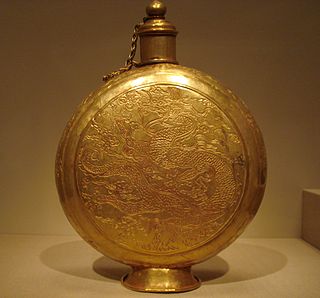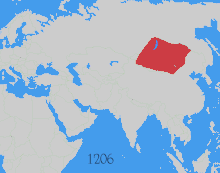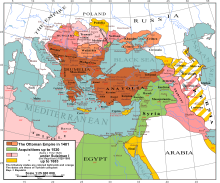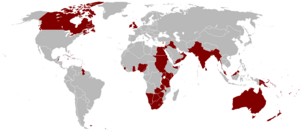
The history of Asia can be seen as the collective history of several distinct peripheral coastal regions such as East Asia, South Asia, Southeast Asia and the Middle East linked by the interior mass of the Eurasian steppe. See History of the Middle East and History of the Indian Subcontinent for further details on those regions.

Slavery is the ownership of a person as property, especially in regards to their labor. Slavery typically involves compulsory work with the slave's location of work and residence dictated by the party that holds them in bondage. Enslavement is the placement of a person into slavery, and the person is called a slave or an enslaved person.

Immanuel Maurice Wallerstein was an American sociologist and economic historian. He is perhaps best known for his development of the general approach in sociology which led to the emergence of his world-systems approach. He was a Senior Research Scholar at Yale University from 2000 until his death in 2019, and published bimonthly syndicated commentaries through Agence Global on world affairs from October 1998 to July 2019.
Dependency theory is the idea that resources flow from a "periphery" of poor and underdeveloped states to a "core" of wealthy states, enriching the latter at the expense of the former. A central contention of dependency theory is that poor states are impoverished and rich ones enriched by the way poor states are integrated into the "world system". This theory was officially developed in the late 1960s following World War II, as scholars searched for the root issue in the lack of development in Latin America.

Underdevelopment, in the context of international development, reflects a broad condition or phenomena defined and critiqued by theorists in fields such as economics, development studies, and postcolonial studies. Used primarily to distinguish states along benchmarks concerning human development—such as macro-economic growth, health, education, and standards of living—an "underdeveloped" state is framed as the antithesis of a "developed", modern, or industrialized state. Popularized, dominant images of underdeveloped states include those that have less stable economies, less democratic political regimes, greater poverty, malnutrition, and poorer public health and education systems.

The earliest humans were hunter gatherers who were living in small, family groupings. Even then there was considerable trade that could cover long distances. Archaeologists have found that evidence of trade in luxury items like precious metals and shells across the entirety of the continent.

World-systems theory is a multidisciplinary approach to world history and social change which emphasizes the world-system as the primary unit of social analysis.
Slavery in medieval Europe was widespread. Europe and North Africa were part of a highly interconnected trade network across the Mediterranean Sea, and this included slave trading. During the medieval period (500–1500), wartime captives were commonly forced into slavery. As European kingdoms transitioned to feudal societies, a different legal category of unfree persons -- serfdom -- began to replace slavery as the main economic and agricultural engine. Throughout medieval Europe, the perspectives and societal roles of enslaved peoples differed greatly, from some being restricted to agricultural labor to others being positioned as trusted political advisors.

The history of slavery spans many cultures, nationalities, and religions from ancient times to the present day. Likewise, its victims have come from many different ethnicities and religious groups. The social, economic, and legal positions of enslaved people have differed vastly in different systems of slavery in different times and places.

The Great Divergence or European miracle is the socioeconomic shift in which the Western world overcame pre-modern growth constraints and emerged during the 19th century as the most powerful and wealthy world civilizations, eclipsing previously dominant or comparable civilizations from the Middle East and Asia such as the Ottoman Empire, Mughal India, Safavid Iran, Qing China, and Tokugawa Japan, among others.

Slavery has historically been widespread in Africa. Systems of servitude and slavery were common in parts of Africa in ancient times, as they were in much of the rest of the ancient world. When the trans-Saharan slave trade, Indian Ocean slave trade and Atlantic slave trade began, many of the pre-existing local African slave systems began supplying captives for slave markets outside Africa. Slavery in contemporary Africa is still practiced despite it being illegal.
The global language system is the "ingenious pattern of connections between language groups". Dutch sociologist Abram de Swaan developed this theory in 2001 in his book Words of the World: The Global Language System and according to him, "the multilingual connections between language groups do not occur haphazardly, but, on the contrary, they constitute a surprisingly strong and efficient network that ties together – directly or indirectly – the six billion inhabitants of the earth." The global language system draws upon the world system theory to account for the relationships between the world's languages and divides them into a hierarchy consisting of four levels, namely the peripheral, central, supercentral and hypercentral languages.
The role and scale of British imperial policy during the British Raj on India's relative decline in global GDP remains a topic of debate among economists, historians, and politicians. Some commentators argue the effect of British rule was negative, and that Britain engaged in a policy of deindustrialisation in India for the benefit of British exporters which left Indians relatively poorer than before British rule. Others argue that Britain's impact on India was either broadly neutral or positive, and that India's declining share of global GDP was due to other factors, such as new mass production technologies or internal ethnic conflict.

In world systems theory, the periphery countries are those that are less developed than the semi-periphery and core countries. These countries usually receive a disproportionately small share of global wealth. They have weak state institutions and are dependent on — and, according to some, exploited by — more developed countries. These countries are usually behind because of obstacles such as lack of technology, unstable government, and poor education and health systems. In some instances, the exploitation of periphery countries' agriculture, cheap labor, and natural resources aid core countries in remaining dominant. This is best described by dependency theory, which is one theory on how globalization can affect the world and the countries in it. It is, however, possible for periphery countries to rise out of their status and move into semi-periphery or core status. This can be done by doing things such as industrializing, stabilizing the government and political climate, etc.

In world-systems theory, the semi-periphery countries are the industrializing, mostly capitalist countries which are positioned between the periphery and core countries. Semi-periphery countries have organizational characteristics of both core countries and periphery countries and are often geographically located between core and peripheral regions as well as between two or more competing core regions. Semi-periphery regions play a major role in mediating economic, political, and social activities that link core and peripheral areas.

The economic history of China covers thousands of years and the region has undergone alternating cycles of prosperity and decline. China, for the last two millennia, was one of the world's largest and most advanced economies. Economic historians usually divide China's history into three periods: the pre-imperial era before the rise of the Qin; the early imperial era from the Qin to the rise of the Song ; and the late imperial era, from the Song to the fall of the Qing.
A world-system is a socioeconomic system, under systems theory, that encompasses part or all of the globe, detailing the aggregate structural result of the sum of the interactions between polities. World-systems are usually larger than single states, but do not have to be global. The Westphalian System is the preeminent world-system operating in the contemporary world, denoting the system of sovereign states and nation-states produced by the Westphalian Treaties in 1648. Several world-systems can coexist, provided that they have little or no interaction with one another. Where such interactions becomes significant, separate world-systems merge into a new, larger world-system. Through the process of globalization, the modern world has reached the state of one dominant world-system, but in human history there have been periods where separate world-systems existed simultaneously, according to Janet Abu-Lughod. The most well-known version of the world-system approach has been developed by Immanuel Wallerstein. A world-system is a crucial element of the world-system theory, a multidisciplinary, macro-scale approach to world history and social change.

An overview of Asian slavery shows it has existed in all regions of Asia throughout its history. Although slavery is now illegal in every Asian country, some forms of it still exist today.
The theory of imperialism refers to a range of theoretical approaches to understanding the expansion of capitalism into new areas, the unequal development of different countries, and economic systems that may lead to the dominance of some countries over others. These theories are considered distinct from other uses of the word imperialism which refer to the general tendency for empires throughout history to seek power and territorial expansion. The theory of imperialism is often associated with Marxist economics, but many theories were developed by non-Marxists. Most theories of imperialism, with the notable exception of ultra-imperialism, hold that imperialist exploitation leads to warfare, colonization, and international inequality.


















